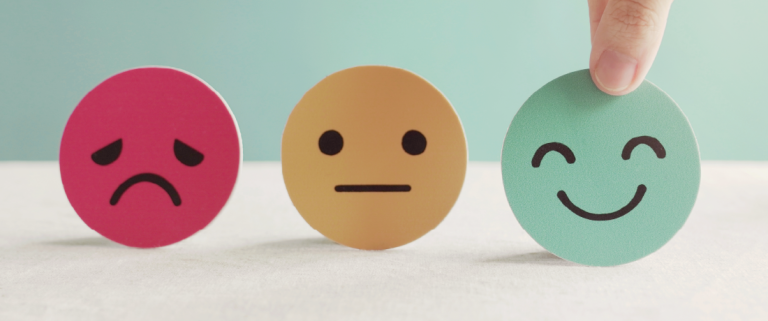Nearly a decade ago, Sun Life started to notice a shift in the types of benefits coverage being accessed by its employees.
“We could really see that mental health was emerging as our most prominent category of disability,” said Nicole Montpetit, the Toronto-based vice-president, total rewards, Canada at Sun Life.
In response, the company embraced a more proactive stance, boosting mental health coverage up to $12,500 annually as part of its flexible benefits, she said. The goal was to equip workers with the tools to focus on their psychological health in a proactive manner for themselves and their families.

That money can be spent on a range of professionals including counsellors, family/marriage therapists, psychiatrists, psychotherapists, psychologists, and social workers.
“It’s a large number, but I would say that if people do have needs, we need to make sure that they can get covered and that they have adequate access to that support when they need it,” she said.
Mental health coaches and practitioners
It also offered up mental health coaches to its workforce, which numbers about 12,000 in Canada.
“It’s a free and confidential service where people can, proactively almost like a checkup with the doctor, go and consult with a registered mental health practitioner and really create a personalized action plan,” she said.
It also offers an employee and family assistance program (EFAP) through its Lumino virtual care platform. And its most recent addition to the mental health toolkit is something Montpetit said is “a bit unique.”
About a year-and-a-half ago, it hired a full-time mental health practitioner as part of its HR team to support its leaders and its workers, she said.
“This is an individual who will really consult with leaders and employees on different types of situations,” said Montpetit. “We have a small but mighty team that focuses on our programs.”
That includes offering advice to managers when supporting an at-risk employee in terms of what resources might be available and suitable to help them through the issue, she said.
More employees using benefits
Employees haven’t been shy about using the benefits, something Montpetit called a “good thing.”
In 2020, mental health benefit usage was around 12 per cent, she said. Last year, that figure had increased to 18 per cent.
“We’re very driven by helping our clients and our employees achieve lifetime financial security and live healthier lives,” she said. “We know that we need to be a leader in this space to really inspire meaningful action, and we do that by being best in class for our own employees.”
It also goes a long way in fostering a culture that is “inclusive, flexible, and caring,” she said, adding the goal is to provide staff the support they need so they can do their best work.
“We’re meeting them in those moments that matter. There’s lot of linkages — these things are related, right? If people’s financial well-being is not stable, that affects their mental health. If they’re going through an illness, that can affect their mental health. And their mental health can affect their work,” she said. “We really feel it’s important to look at it holistically.”
Mental health versus mental illness
Bill Howatt, a workplace mental health expert and founder of Ottawa-based Howatt HR, lauded Sun Life’s approach — and said more organizations need to take a proactive stance on their workers’ mental fitness.
“You shouldn’t need to have a meltdown to go talk to a psychologist,” he said. “But employers are not taking the same approach to mental health as they did with, for example, fitness when they bought gym memberships for everybody.”
Too many leaders and organizations are confusing mental health with mental illness, and they’re not the same thing, said Howatt. He wants to see mental health benefits treated like other paramedical benefits — where employers encourage proactive use to prevent long-term issues.
Howatt said one critical workplace measure of mental health is how much time employees spend flourishing versus languishing.
“Employers understand that engaged employees are more productive, but we haven’t yet crossed the Rubicon to understand that engaged employees are flourishing employees,” he said. “In reality, what is engagement? It is how employees feel.”
Setting up a program
Organizations looking to setup a new workplace mental health program, or improve existing ones, need to focus on a comprehensive program and not individual tactics, said Howatt.
One tip he offers is to avoid branding it as a mental health strategy and opt instead for an “employee experience” program, he said.
“I believe there is so much misconception on what a workplace mental health strategy is,” he said. “Employee experience, however, is a focus on helping employees have a positive experience. It’s clearer.”
He outlines a strategic approach that includes adopting a “Plan-Do-Check-Act” cycle, emphasizing the importance of measurable outcomes and program evaluation.
Individuals overseeing these programs should have credible knowledge and be able to construct a business case that showcases the value of investment (VOI) and return on investment (ROI) based on evidence-based practices, he said.
It’s also a worthwhile exercise to hold focus groups and interviews with teams to “discover all the things that are charging their batteries versus what is draining batteries,” he said. The goal is to foster sustainable habits over sporadic activities.
Montpetit said one relatively inexpensive benefit that can make a big difference is offering care days to workers.
“That offers the flexibility for people to care, proactively, for themselves,” she said, adding that many Gen-X workers are currently part of the “sandwich generation” taking care of both their children and elderly parents.
“Caregiving can be quite stressful and can really impact people’s mental well-being as well,” she said.
“Making use of mental health benefits” ?

Sign Up Today! HCM DIALOGUE is more than just a news source – it’s a place for Finance, HR and Payroll professionals to come together and share their expertise.




Leave a Reply
You must be logged in to post a comment.